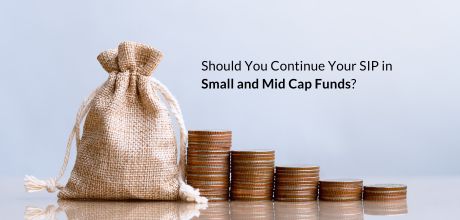Mutual Fund Investor? Drop these 4 portfolio damaging habits today!

To maximize returns, avoid common mistakes in mutual fund investing like ignoring asset allocation, excessive churning, lack of reviews, and overdiversification. Focus on a balanced, well-reviewed portfolio with strategic rebalancing for long-term growth.
The Mutual Fund industry has received a shot in the arm in the form of AMFI’s impactful Mutual Funds Sahi Hai campaign. On a year on year basis, the industry AUM witnessed a stellar growth rate of 20.57% despite volatile markets. While mutual fund investing is relatively simple in principle, there are in fact a few all too common mistakes that can wreak havoc on your portfolio and negate your chances of making good returns from them. Here are four of them for you to make note of.
Not Paying Attention to Asset Allocation
However high or low the stock markets are headed, going all out into equity funds isn’t a good idea. Neither is being steadfastly risk averse and allocating all your money to debt funds! Instead, consult with a Financial Advisor and take a risk profiling quiz to determine your ideal asset allocation. Your ideal asset allocation may vary depending upon the state of the stock markets too. For instance, if markets are deeply undervalued, even low risk investors may want to have at least 30% of their assets in Equity Funds. What’s important is to have a well thought out, rational asset allocation plan – and sticking to it resolutely.
Excessive Churning
Mutual Funds are meant to be more passive than active. You do not necessarily need to churn your portfolio every couple of months and replace your existing funds with different funds, or especially NFO’s (New Fund Offers) which may have higher expense ratios and no previous track records of performance. Remember that your Fund Manager is, in fact, managing your portfolio dynamically and using his research workforce and intellect to have you in the best possible stocks at any given point of time. Attempting to ‘manage the manager’ will create very little value addition, if any. It could also create tax inefficiencies and lead to losses in your portfolio, if you’re unlucky!
Lack of Reviews
The converse of churning excessively is the super-passive approach of not rebalancing your portfolio at all – equally detrimental. Remember those market movements will distort your ideal asset allocation, and it’s a wise idea to go back to your portfolio once a year and check whether you’re not skewed in either direction. You could do this on your portfolio anniversary, once a year on a specific date, or depending upon market triggers that your Financial Advisor may have decided (such as a certain PE ratio or Market Cap to GDP ratio, to name two). Remember, funds that have performed well in the past may fall ut of favor too. Being too passive may lead to an accumulation of ‘has been’ funds in your portfolio. It’s important to go back to your portfolio with the support of a qualified Financial Advisor and weed out these underperformers.
Overdiversification
There are no medals for owning tens of mutual funds; only to eventually lose track of them as monitoring them just became too tedious! A single Equity Mutual Fund scheme is likely to be investing into 50-75 different stocks, so there’s really no point in owning several funds. Several studies have proven that diversification benefits start tapering off eventually and start affecting your portfolio negatively beyond a point. It’s better to draw the line at a maximum of 5 to 7 funds in each category (equity and debt) at all points of time.
Your Investing Experts
Relevant Articles
How To Select The Best Mutual Funds For Long Term Goals
Mutual funds offer a compelling way to invest for long-term goals, leveraging professional management and diversification to potentially achieve significant returns. But with a vast array of options available, selecting the best mutual funds for the long term can feel daunting. This guide will equip you with the knowledge to confidently navigate the mutual fund landscape and learn how to select the best mutual fund aligned with your long-term aspirations.
Should You Continue Your SIP in Small Cap Mutual Funds
Investing in small cap funds requires patience and discipline, especially during market corrections. By staying committed to your SIPs and focusing on long-term goals, you can leverage the power of rupee cost averaging and compounding. Don’t let short-term market noise dictate your strategy—remain focused, stay the course, and trust that your disciplined approach will yield results over time.
Systematic Withdrawal Plans (SWP): A Reliable Way to Generate Regular Income
An SWP allows investors to withdraw a predetermined amount from their mutual fund investments at regular intervals, such as monthly, quarterly or annually. The beauty of SWPs lies in their flexibility—they provide consistent income while allowing the remaining investment to continue growing.
.png)


_(2).jpg)